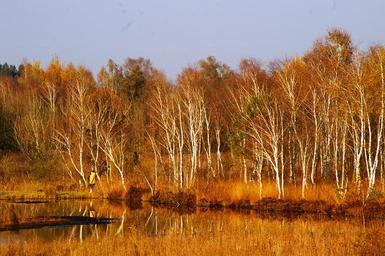Introduction
In the world of visual storytelling, the environment plays a pivotal function in crafting compelling narratives through photography. Whether you're engaging in aesthetic photography, catching the essence of human feeling through self-portrait photography, or checking out the depths of contemplative photography, the area around you can improve or detract from your creative vision. This article will delve into producing atmosphere within your photographic spaces utilizing interior decoration strategies, guaranteeing that your compositions resonate with authenticity and creativity.
Creating Environment: Interior Design Tips for Photographic Spaces
Creating an immersive environment in your photographic area is akin to setting a phase for a theatrical performance. Every component within this environment can narrate, and it's crucial to think about how these components interact with the themes of your work.
Understanding Aesthetic Photography
Aesthetic photography concentrates on the charm and emotional effect of an image. To achieve stunning outcomes, one must think about the following elements:
Choosing Your Color Palette
Colors stimulate feelings and set the state https://www.tumblr.com/crookedtidalwaveanchor/767371174142525441/interior-art-concepts-merging-photography-with of mind. For example:
- Warm colors (reds, oranges) can create passion. Cool colors (blues, greens) evoke calmness.
By balancing your color combination with your theme, you can create an inviting atmosphere that improves your photographic narrative.
Lighting Considerations
Natural light is frequently chosen in aesthetic photography due to its soft quality. Here are some ideas:

- Use sheer curtains to diffuse harsh sunlight. Position mirrors tactically to reflect light.
Self-Portrait Photography: Crafting Identity Through Space
Self-portrait photography is more than just capturing one's likeness; it has to do with exploration and self-expression in art.
Personalizing Your Space
To successfully communicate identity in art:
- Incorporate personal artifacts (books, keepsakes). Choose backgrounds that resonate with your personal journey.
Framing Your Portraits
The layout of items can assist viewers' eyes toward you as the topic. Think about using leading lines created by furnishings or decoration items.
Contemplative Photography: Finding Tranquil Settings
Contemplative photography grows on stillness and reflection, which suggests producing a serene environment is essential.
Minimalistic Design Approach
Less is typically more when it concerns reflective spaces:
- Limit distractions by decluttering. Utilize neutral tones that promote serenity.
Nature Elements for Calmness
Integrating plants or nature-inspired decor can enhance relaxation, making it simpler for both you and your audience to engage deeply with your work.
Self-Expression in Art: Designing with Intent
Art should be an extension of oneself; thus, every element of interior design must show individual values and beliefs.
Choosing Significant Design Items
Select products that narrate about who you are. For example:
- Family treasures can stimulate nostalgia. Art pieces may represent personal milestones.
Portrait Designs: Adjusting Areas for Different Themes
Different portrait styles require customized environments. Let's explore how numerous designs affect interior design options:
Faceless Pictures: Creating Secret Through Ambiguity
In faceless pictures, identity becomes abstract:
- Use shadowy corners or dim lighting to odd features.
This develops intrigue and interest while keeping focus on type and context instead of facial expressions.
Fine Art Photography: Elevating Spaces to Gallery Standards
When aiming for art photography:
- Consider gallery-style wall displays.
Use frames that match however do not overshadow the artwork itself.
Abstract Portraits: Stressing Type Over Identity
Abstract pictures concentrate on shapes and colors rather than conventional representations of identity:
Utilizing Bold Decor Choices
To echo abstraction:
- Choose geometric furnishings designs.
This assists enhance the theme visually throughout your area while enabling liberty in interpretation during shoots.
FAQs
1. What kind of lighting is best for picture photography?
Natural light is typically perfect since it offers soft shadows and boosts skin tones.
2. How do I pick a color palette for my photographic space?
Consider colors that resonate mentally with you or line up with the themes you want to express.
3. What must I prevent when creating my photographic space?
Avoid excessive mess which may distract from the subject matter.
4. Can I blend different design styles?
Absolutely! Blending styles can add depth but guarantee they share common aspects like color schemes.
5. How do I integrate personal products into my pictures without overwhelming them?
Choose a couple of considerable products that narrate without dominating the frame.
6. Why is minimalism crucial in reflective photography?
Minimalism promotes focus on psychological reaction rather than visual complexity, improving viewer engagement.
Conclusion
Creating atmosphere within your photographic spaces includes mindful factor to consider of style components that reflect both your artistic vision and individuality. By leveraging techniques from visual photography through to self-expression in art, you can change normal spaces into extraordinary environments conducive to creativity and storytelling. Remember, every detail counts-- from color schemes and lighting choices to significant design-- each contributes substantially towards improving not only how images are captured but likewise how they are viewed by audiences long after they've left their frames behind.
Adopting these interior decoration ideas will help cultivate an ambiance that resonates deeply with both yourself as an artist and those who experience your work-- a real testament to the power of place in artistry.